Obrazy na żywo
Najłatwiejszym sposobem na jego wypróbowanie, jest obraz na żywo uruchomiony z dysku USB. Obrazy Dokera także dają szybki i łatwy sposób na wypróbowanie Plazmy.
Download live images with Plasma Download Docker images with PlasmaPlasma 5.21 is all about upgrading the looks and usability of Plasma.
Czwartek, 21 Styczeń 2021
Development of the upcoming version of Plasma 5.21 has, among other things, introduced many improvements into Plasma's design, utilities and themes, with the aim of providing end users with a more pleasant and accessible environment.
Although most things in Plasma 5.21 beta will work fine, please note it is still beta software and released mainly for testing purposes. Using this software in production is NOT recommended.
The final version of Plasma 5.21 will be available on the 16th of February.
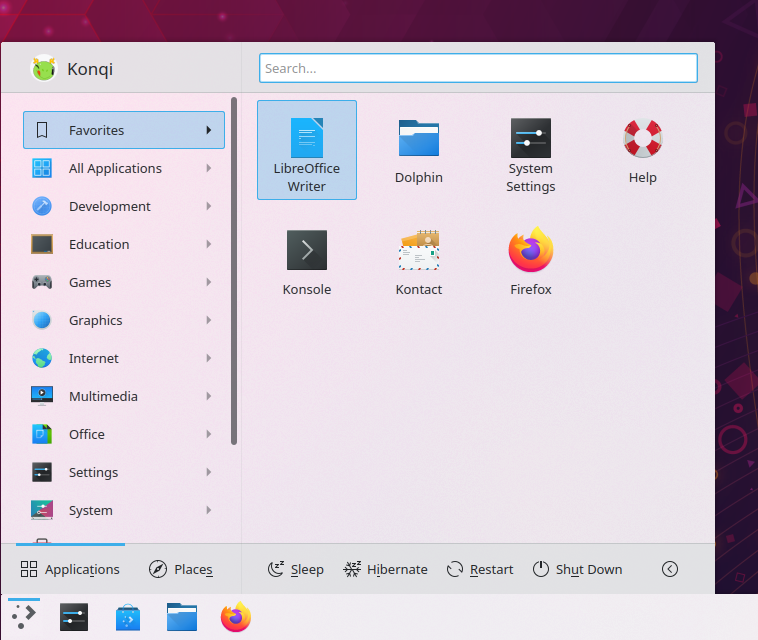
Plasma 5.21 introduces a new application launcher that features a double-pane UI, improvements to keyboard and mouse navigation, better accessibility and support for languages with RTL writing.
The new launcher includes an alphabetical “All Applications” view, a grid-style favorites view, and power actions visible by default with their labels.
Last but not least, we have fixed most of the bugs reported by users, guaranteeing a smoother access to all your stuff.
The old Kickoff app launcher is still available at store.kde.org.

Applications using Plasma's default theme now have a refreshed color scheme and sport a brand new unified headerbar style with a clean, cool new look.
Meet Breeze Twilight: a combination of a dark theme for Plasma and a light theme for applications, so you can enjoy the best of both worlds. It's available in the Global Theme settings
Plasma System Monitor is a new UI for monitoring system resources. It is built on top of Kirigami and a system statistics service called "KSystemStats". It shares code with the new system monitor applets introduced in Plasma 5.19 and is designed to succeed KSysGuard.
Plasma System Monitor provides many different views, offering an overview page that provides information on important core resources, like memory, disk space, network and CPU usage. It also provides a quick view of the applications consuming the most resources.
If you need more details, the Applications page shows you all the running applications along with detailed statistics and graphs. A process page is also available for per process information.
History shows the evolution of the use of your machine's resources over time.
Finally, you can also create new customized pages using the page editor. This lets you tailor the information you get from your system to your needs.
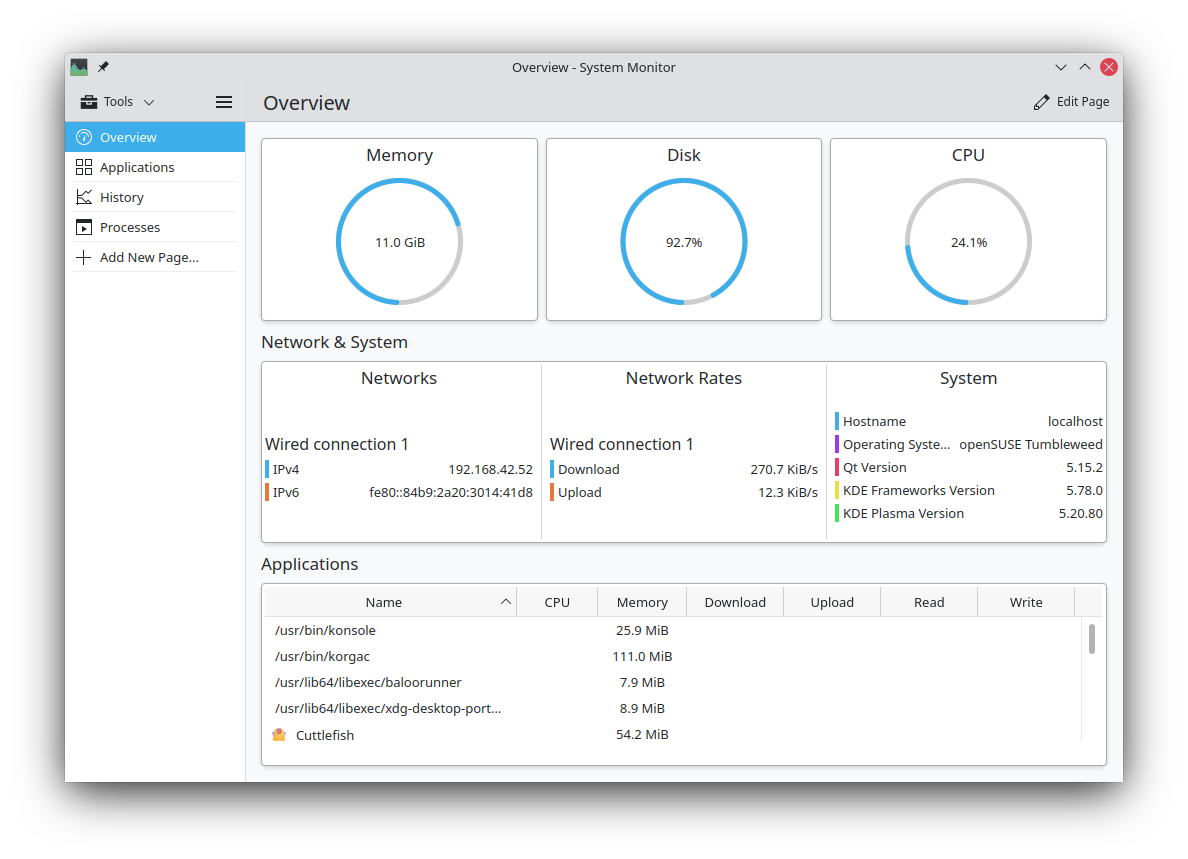

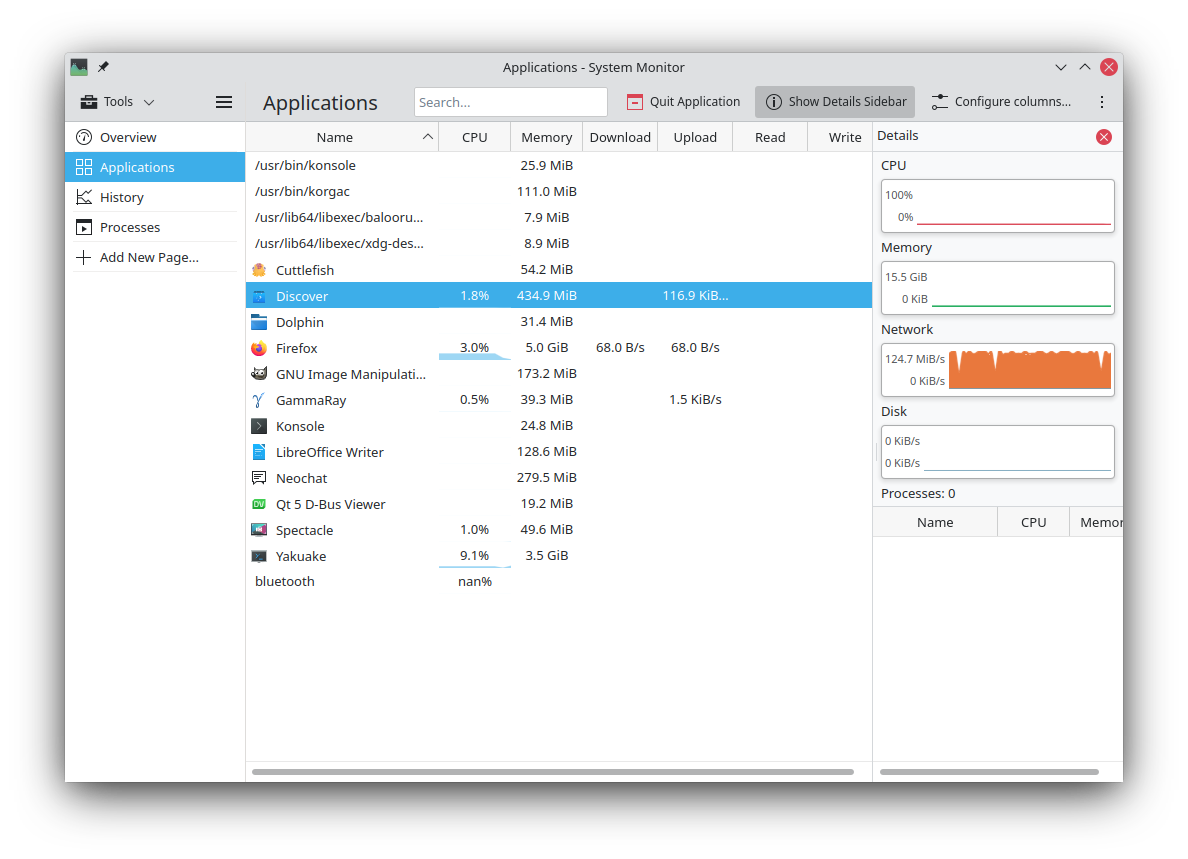
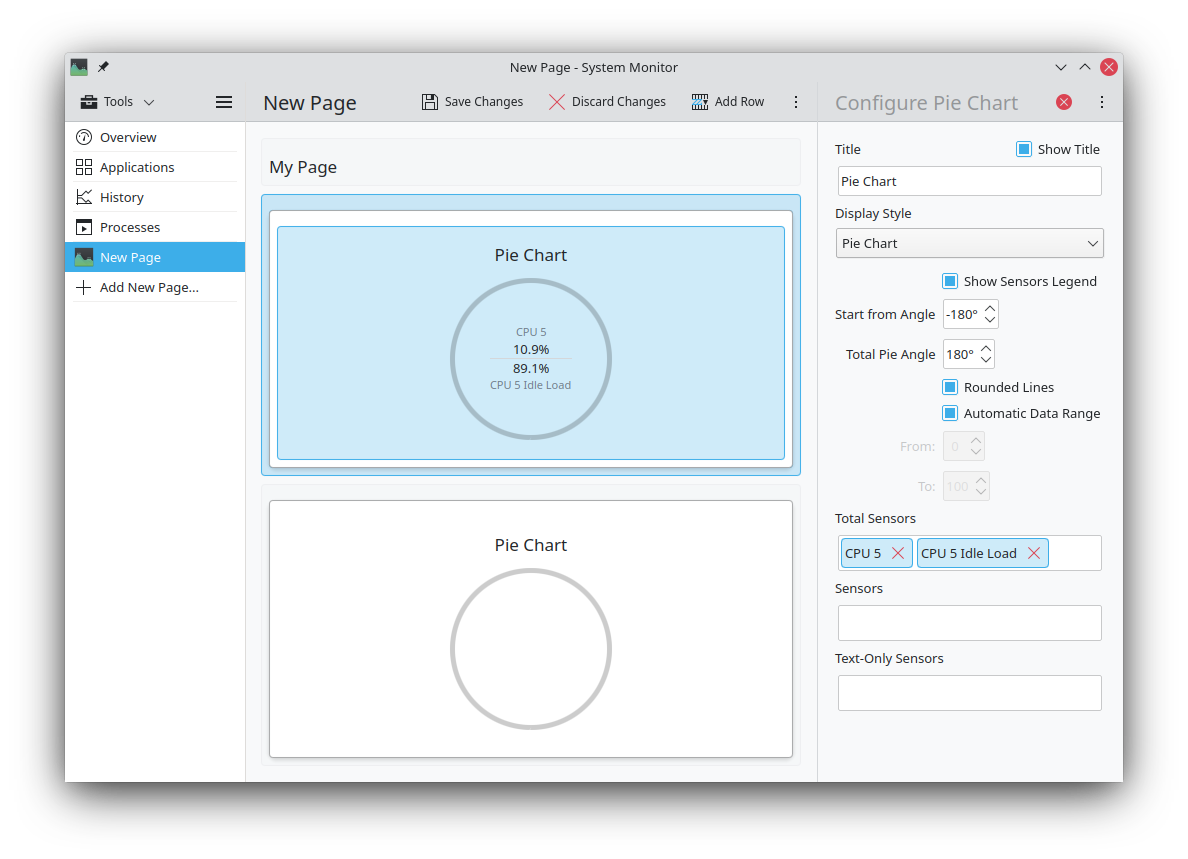
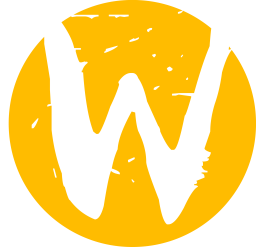
KDE is pushing to have first class support for Wayland, and Plasma 5.21 makes great headway to reach that goal.
The compositing code in KWin has been extensively refactored and should reduce latency throughout all compositing operations. We have also added a control in the compositing settings so you can choose whether you prefer lower latency or smoother animations.
In addition, we have also added support for mixed-refresh-rate display setups on Wayland, e.g. you can have one screen refreshing at 144Hz and another at 60Hz. Preliminary support for multiple GPUs was also added on Wayland.
The virtual keyboard in Wayland has been improved and now supports GTK applications using the text-input-v3 protocol. The support for graphical tablets has also been improved and now includes all the controls that were missing in the previous version, such as pad ring and pad buttons.
Apart from the numerous improvements in stability, there are quite a few Plasma components that are getting much better support in Wayland. For example, KRunner is now able to list all open windows in Wayland, and we now support features required for GTK4, so GTK4 application will now work.
Plasma 5.21 brings a new page to the System Settings: the Plasma Firewall settings. This configuration module lets you set up and edit a Firewall for your system and is a graphical frontend for both UFW and firewalld.
Multiple pre-existing configuration pages have been completely rewritten and are now cleaner and easier to use. This has been the case for the Accessibility, Desktop Session and SDDM configuration modules.

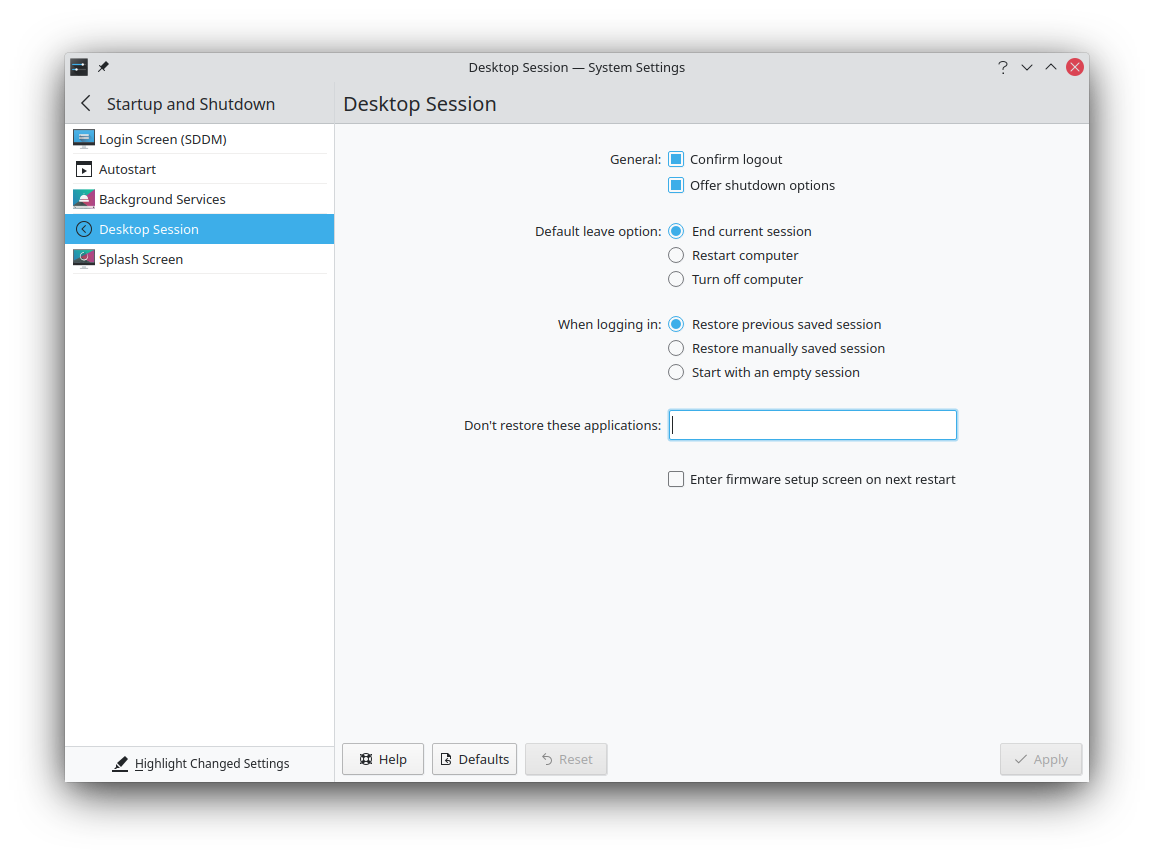


The Media Player applet's layout has been improved and now includes the list of applications currently playing music in the header as a tab bar. Another upgrade is that the album cover now takes up the whole width of the applet.
media.png)
Plasma has always been designed to be form factor flexible. It can work on a desktop but it's also easily adaptable to work on a mobile. The PinePhone KDE Community Edition is now shipping. In Plasma 5.21 we are adding two new components for mobile in the official release.
Najłatwiejszym sposobem na jego wypróbowanie, jest obraz na żywo uruchomiony z dysku USB. Obrazy Dokera także dają szybki i łatwy sposób na wypróbowanie Plazmy.
Download live images with Plasma Download Docker images with PlasmaDystrybucje utworzyły, lub są w trakcie tworzenia, pakietów wymienionych na naszej stronie wiki.
Note that packages of this release might not be available on all distributions at the time of this announcement.
Strona wiki pobierania pakietuYou can install Plasma directly from source.
Instrukcje społeczności nt. jej zbudowania Strona informacyjna źródełMożesz przekazać nam swoją opinię i uzyskać uaktualnienia na naszych kanałach w mediach społecznościowych.
Discuss KDE on the KDE Forums.
You can provide feedback direct to the developers via the #Plasma Matrix channel, Plasma-devel mailing list or report issues via Bugzilla. If you like what the team is doing, please let them know!
Twoja opinia ma dla nas wielkie znaczenie.
KDE is a Free Software community that exists and grows only because of the help of many volunteers that donate their time and effort. KDE is always looking for new volunteers and contributions, whether it is help with coding, bug fixing or reporting, writing documentation, translations, promotion, money, etc. All contributions are gratefully appreciated and eagerly accepted. Please read through the Supporting KDE page for further information or become a KDE e.V. supporting member through our Join the Game initiative.
KDE is an international technology team that creates free and open source software for desktop and portable computing. Among KDE’s products are a modern desktop system for Linux and UNIX platforms, comprehensive office productivity and groupware suites and hundreds of software titles in many categories including Internet and web applications, multimedia, entertainment, educational, graphics and software development. KDE software is translated into more than 60 languages and is built with ease of use and modern accessibility principles in mind. KDE’s full-featured applications run natively on Linux, BSD, Windows, Haiku, and macOS.
Uwagi do znaku towarowego.
KDE® oraz logo Środowiska Pulpitu K® są zarejestrowanymi znakami towarowymi KDE e.V..
Linux jest zarejestrowanym znakiem towarowym Linusa Torvaldsa. UNIX jest zarejestrowanym znakiem towarowym Otwartej Grupy w Stanach Zjednoczonych i innych państwach.
Wszystkie pozostałe znaki towarowe i prawa autorskie z tego ogłoszenia są własnością ich odpowiednich właścicieli.
Po więcej szczegółów wyślij nam wiadomość: press@kde.org